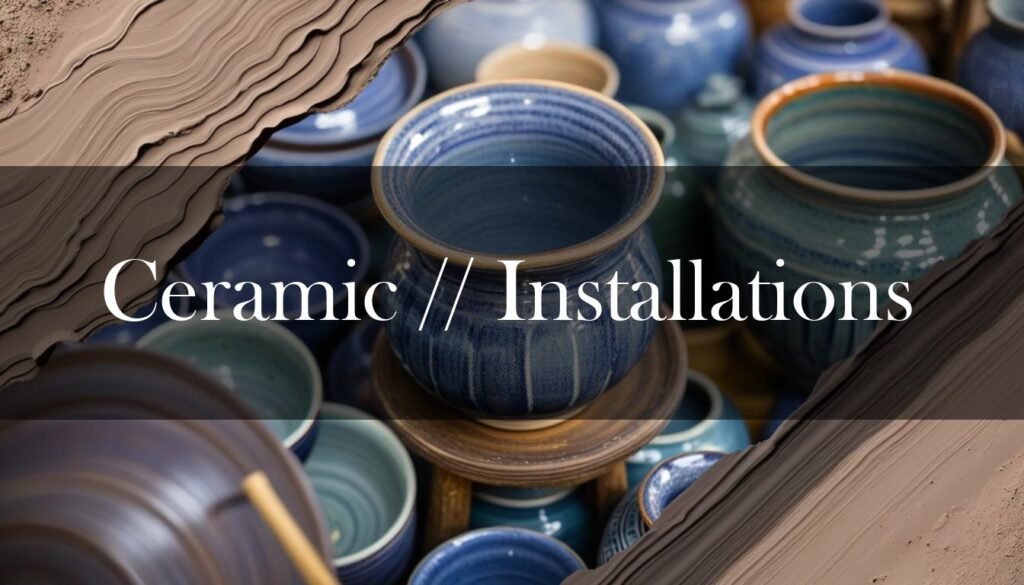Ceramic art installations represent a fascinating intersection of traditional craftsmanship and contemporary artistic expression. These large-scale works transform spaces, inviting viewers to engage with clay in new and unexpected ways. From striking wall reliefs to immersive environments, ceramic installations push the boundaries of what’s possible with this versatile material. Artists are increasingly blending time-honored techniques with innovative approaches, creating pieces that are both visually stunning and conceptually rich. You can see more examples of this in this article.
One captivating aspect of ceramic installations is their ability to address significant social and environmental themes. Artists like Courtney Mattison create intricate coral reef sculptures to highlight the devastating effects of climate change on marine ecosystems. Her detailed work, “Our Changing Seas III,” serves as a poignant reminder of the fragility and beauty of our oceans. Similarly, Cannupa Hanska Luger uses ceramics to raise awareness about social issues, with pieces like “Every One,” a collection of 4,000 handmade ceramic beads representing missing or murdered Indigenous women, girls, and LGBTQ+ individuals. These installations not only showcase the artistic potential of ceramics but also act as powerful catalysts for dialogue and change.
“These installations not only showcase the artistic potential of ceramics but also act as powerful catalysts for dialogue and change.”
The techniques employed in creating ceramic installations are as diverse as the artists themselves. While some, like Pewabic Pottery, continue a legacy of crafting architectural tiles with distinctive iridescent glazes for public buildings, others are embracing cutting-edge technologies. Robotic 3D printing, for instance, is enabling artists to create complex and large-scale forms that would be impossible to achieve manually. Artists also create tessellated wall installations, designing interlocking ceramic tiles that form continuous patterns, transforming walls into dynamic artworks, as seen in this article. The integration of mixed media is also gaining traction, with artists incorporating materials like metal, video screens, and found objects to create immersive and multi-sensory experiences, much like Linda Sormin’s complex assemblies of clay, video, and structural components.
- Robotic 3D printing is enabling artists to create complex forms.
- Artists design tessellated wall installations using interlocking ceramic tiles.
- Mixed media integration creates immersive, multi-sensory experiences.
Site-specific installations take this art form a step further, creating ceramic works that are intimately connected to their environment. Joan Bankemper’s garden installations blend art and life, using recycled materials to create fantastical planters and garden spaces. Robert Harrison’s architectural ceramic sculptures around the world incorporate locally sourced materials, reflecting the unique cultural and architectural context of each location. These site-specific works invite viewers to consider the relationship between art, nature, and the built environment, fostering a deeper appreciation for the interconnectedness of all things.
Joan Bankemper: Blends art and life using recycled materials in garden installations.
Robert Harrison: Incorporates locally sourced materials in architectural sculptures.
Caring for these installations involves regular cleaning with pH-neutral cleaners and preventing exposure to extreme temperature or humidity, much like these guidelines suggest. You can preserve your own art by following practices in this article. Whether it’s the grand scale of Stan Bitters’ monumental ceramic murals or the delicate intricacy of Charabati Bizzarri’s textile-like wall installations, these ceramic creations enrich our world, offering a tactile and thought-provoking way to experience art.





